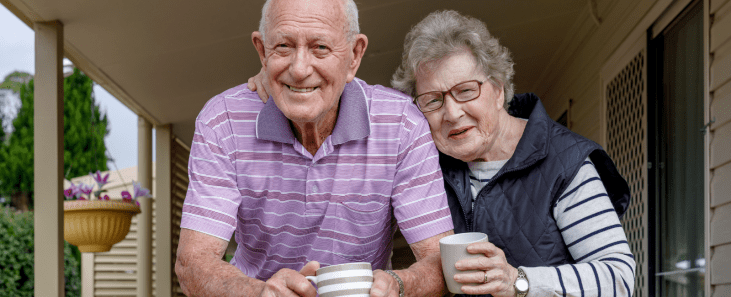A Guide to Staying in Your Own Home as You Get Older

Many people hope to maintain their independence for as long as possible as they age. This includes staying in their own homes, called “aging in place.”
But to live safely in your own home as you get older requires planning, and it's best to make your aging-in-place plan before you require a lot of care. Speak with your loved ones to ensure they understand your preferences, and that you understand the level of care they are able to provide.
Here are some steps to get your started:
Assess the help you currently need
“Help” is a wide category that includes anything from help with yard work to medication administration. Examples include:
- Personal care—Bathing, dressing, grooming, using the toilet, eating, getting in and out of bed, etc.
- Household chores—Housecleaning, grocery shopping, laundry, etc.
- Money management—Paying bills, filling out health insurance forms, etc.
- Transportation—Rides to appointments, the grocery store, etc.
Consider any illnesses that may require greater help in the future
If you are unsure about the progression of an illness (such as heart disease or diabetes), ask your health care provider. Your provider may also be able to suggest resources and agencies in your community that can provide the types of assistance you may need.
Account for resources
Generally, resources to support you living at home as you get older can be either formal or informal:
- Informal caregivers—friends, family, and neighbors—are often the biggest source of help for older adults. Your loved ones may be able to help you with needs such as transportation, household chores, and more.
- Formal services are provided by professionals and can be arranged for a variety of needs—from help with chores around the house to home health care services (assistance with medication, medical equipment, physical or occupational therapy, and more).
Consider your finances
Depending on your exact needs, you may need to budget for:
- Medical alert systems and monthly service costs—These systems respond to medical and other emergencies—such as a fall—using an electronic monitor that you wear.
- Adult day care services—These programs offer social activities, exercise, meals, personal care, and basic health care services in a safe environment under the supervision of trained staff. Generally, they're less expensive than in-home or facility-based care, and some facilities may even offer pick up and drop off services.
- Transportation services—Formal transportation services drive people to and from medical appointments, shopping centers, and other places in the community. Some community groups may offer free or discounted rides. Additionally, public transportation is often discounted for older adults and people with disabilities.
- Home health care services—This includes skilled-care services like nursing care, physical and occupational therapy, speech-language therapy, medical social services, and more. Generally, services provided in-home are less costly than facility-based care.
- Volunteer-based companion services—Look for organizations in your community that provide regular home visits at no cost to older adults. During these short visits, a volunteer can assist with basic needs and provide companionship.
- Meal delivery services—Some charge a fee, whereas others may offer reduced rates based on eligibility (such as age, mobility, or economic need). Senior centers and religious organizations may provide free or lower-cost meals.
Take steps to ensure your ongoing safety and independence at home
According to the Centers for Disease Control and Prevention, falls are the leading cause of injury and death in older adults (age 65+). But falls do not have to be a normal part of aging, and you can reduce your risk using these four steps.
Work with our Care Management team
Our Care Management team is available to CarePartners of Connecticut members at no extra cost. The team can help with identifying your needs, creating your wellness plan, and identifying additional services in your community that you may be eligible for.
To work with our Care Management team, call Member Services at 1-888-341-1507 (TTY: 711) (HMO) or 1-866-632-0060 (TTY: 711) (PPO).



